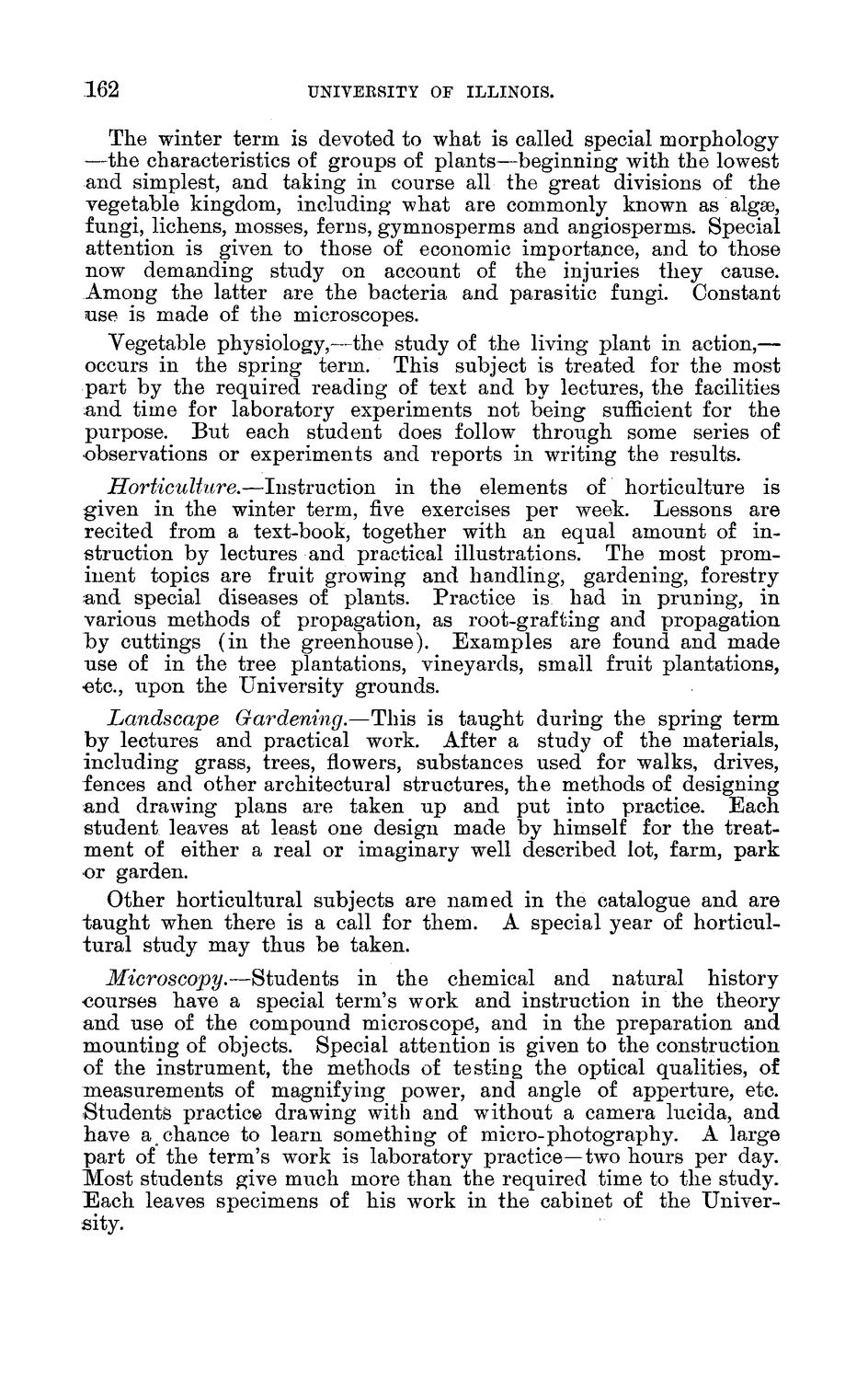| |
| |
Caption: Board of Trustees Minutes - 1888
This is a reduced-resolution page image for fast online browsing.

EXTRACTED TEXT FROM PAGE:
162 UNIVERSITY OF ILLINOIS. The winter term is devoted to what is called special morphology —the characteristics of groups of plants—beginning with the lowest and simplest, and taking in course all the great divisions of the vegetable kingdom, including what are commonly known as algae, fungi, lichens, mosses, ferns, gymnosperms and angiosperms. Special attention is given to those of economic importance, and to those now demanding study on account of the injuries they cause. Among the latter are the bacteria and parasitic fungi. Constant use is made of the microscopes. Vegetable physiology,—the study of the living plant in action,— occurs in the spring term. This subject is treated for the most part by the required reading of text and by lectures, the facilities and time for laboratory experiments not being sufficient for the purpose. But each student does follow through some series of observations or experiments and reports in writing the results. Horticulture.—Instruction in the elements of horticulture is given in the winter term, five exercises per week. Lessons are recited from a text-book, together with an equal amount of instruction by lectures and practical illustrations. The most prominent topics are fruit growing and handling, gardening, forestry and special diseases of plants. Practice is had in pruning, in various methods of propagation, as root-grafting and propagation by cuttings (in the greenhouse). Examples are found and made use of in the tree plantations, vineyards, small fruit plantations, •etc., upon the University grounds. Landscape Gardening.—This is taught during the spring term by lectures and practical work. After a study of the materials, including grass, trees, flowers, substances used for walks, drives, fences and other architectural structures, the methods of designing and drawing plans are taken up and put into practice. Each student leaves at least one design made by himself for the treatment of either a real or imaginary well described lot, farm, park or garden. Other horticultural subjects are named in the catalogue and are "taught when there is a call for them. A special year of horticultural study may thus be taken. Microscopy.—Students in the chemical and natural history courses have a special term's work and instruction in the theory and use of the compound micros cope*, and in the preparation and mounting of objects. Special attention is given to the construction of the instrument, the methods of testing the optical qualities, of measurements of magnifying power, and angle of apperture, etc. Students practice drawing with and without a camera lucida, and have a chance to learn something of micro-photography. A large part of the term's work is laboratory practice—two hours per day. Most students give much more than the required time to the study. Each leaves specimens of his work in the cabinet of the University.
| |